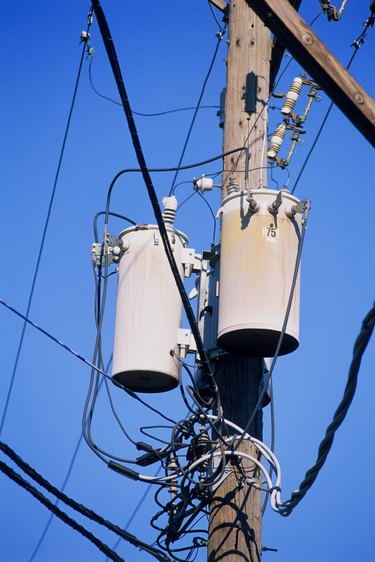Things You'll Need
Rotary phase converter
Three-phase fused disconnect
Insulated 12-gauge wire
Screwdriver

Three-phase 208-volt electric motors are less expensive and more efficient than 220-volt single-phase motors. For this reason, three-phase motors are common on industrial and restaurant equipment, while similar equipment can be difficult if not impossible to find with a single-phase motor. The difference in nominal voltage rating is small enough to be inconsequential, but the three-phase motor's requirement for a third power supply leg must be met. While there is no way to retain the three-phase motor's efficiency advantage without paying for a dedicated three-phase service line, devices are available to convert a three-phase motor to single-phase operation.
Step 1
Switch off the service panel breaker for the single-phase, 220-volt supply circuit.
Video of the Day
Step 2
Connect the black wire of the supply line to the T-1 input terminal of the three-phase disconnect. Connect the red wire to the T-2 input terminal, and connect the bare wire to the ground terminal of the three-phase disconnect.
Step 3
Connect a wire from the T-3 terminal of the phase converter to the T-3 input of the three-phase disconnect. Connect a second wire from the T-2 terminal of the phase converter to the T-2 output terminal of the disconnect. Connect a third wire from the T-1 terminal of the phase converter to the T-1 output terminal of the disconnect.
Step 4
Connect the T-1, T-2 and T-3 wires of the motor to the corresponding output terminals of the disconnect.
Step 5
Connect a ground wire from the chassis ground of the motor to the chassis ground of the phase converter, and thence to the ground connection of the three-phase disconnect.
Warning
Never attempt to work on a live circuit.
Connect the T-1 and T-2 phase converter terminals to the output terminals of the disconnect, never to the input. Otherwise, the phase converter will be energized even when the disconnect is off.
Video of the Day